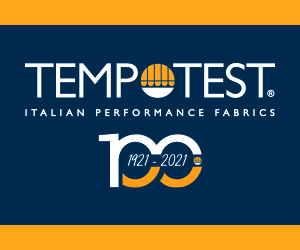Gans/Sapmaz Duo Lead Valley Forge Roller Shade Team
May 18, 2015
POMPANO BEACH, Florida — The market for fabrics used in roller shades is about $300 million according to Jason Gans and Ahmet Sapmaz, the brains behind Valley Forge’s roller shade business said to have achieved $13 million in sales in 2014.
The fabrics represent just a quarter of the total value of finished roller shades or about $1.2 billion annually in the USA, the pair figures.
“We actually had seven figure accounts/projects in the roller shade business,” the pair says. “We’d be happy to have 10-20 percent of the business—or about $30-$60 million,” they said.
The two men say this business is finding great success especially in Saudi Arabia where many new hotels are being built, in Mecca and a booming US hotel market. “Russia is dead but Europe is starting to pick up again,” Sapmaz says. “Dubai is somewhat active but not what it used to be,” he points out.  Ahmet Sapmaz
Ahmet Sapmaz
“Draperies are not going away. Roller shades are a plus business for Valley Forge. Sometimes roller shades re a better solution to the customers’ need especially in high temperature areas where windows face East and West,” Gans says.
Gans, Product Director, also runs the Valley Forge roller shade business with a total of nine employees. He joined Valley Forge in 2007 directly from running a three-store fabric retailer in Florida. He’s been the brains behind Valley Forge leading edge product launches, namely, the ‘Spa Curtain followed by the bedding business. Ahmet joined Valley Forge around the same time. He was previously involved with Kucuculik, the drapery manufacturer based in Turkey. Gans says he likes starting up new businesses with Ahmet who is the sourcing expert “with many more ideas to come,” Gans says.
Before they had a roller shade business, they studied the market to find out what the designer and owner of hotels wanted including the drawbacks and potentials. ”We needed partners. We vetted key roller shade fabricators as well as drapery oriented workrooms getting into roller shades for the first time,’ Gans explains.
“The roller shade is a very technical product. Every effect can be seen in the weave and can easily appear as a defect once the sun hits the fabric. Roller shade fabric is subject to problems with color fastness and cupping once attacked by the sunlight,” Gans says.
“We now have 600 sku’s in our roller shade program at Valley Forge including aluminum backed fabrics used in high sun areas. These fabrics can actually lower room temperature by 20 degrees,” he points out. Valley Forge also supplies the low voltage or high voltage battery mechanism, which can last up to 35 years, Gans says.
In terms of sourcing these fabrics or all fabrics, for that matter, Sapmaz says that Valley Forge is still big with Turkish goods as well as fabrics from Taiwan, Korea and China in that order. The USA is also becoming more important. Sapmaz, who is Vice President of Global Strategic Business Development, says the roller shade fabric suppliers grew out of Valley Forge’s drapery fabric resources. “Many of our drapery suppliers got into roller shade fabrics,” Sapmaz says. Still, Sapmaz points out there is a list of roller shade fabric resources that is totally different from the typical weaving mills known to the upholstery and drapery fabric buyer. They are part of the R&T Trade Show in Stuttgart every four years but there is a roller shade exhibition almost every year in Shanghai, Istanbul and Australia.
“We were skeptical about the roller shade market in the beginning. We also did not want to damage our relationship with our fabricators so we put them in this business. We used our sourcing skills and put more contemporary decorative fabrics in the roller shade offerings to hotels. The typical roller shade fabric had always been highly technical and highly utilitarian that sits on the shelf,” Sapmaz explains. “We wanted to appeal to the hotel owner and designer with our designer oriented roller shade fabric collections.”
















